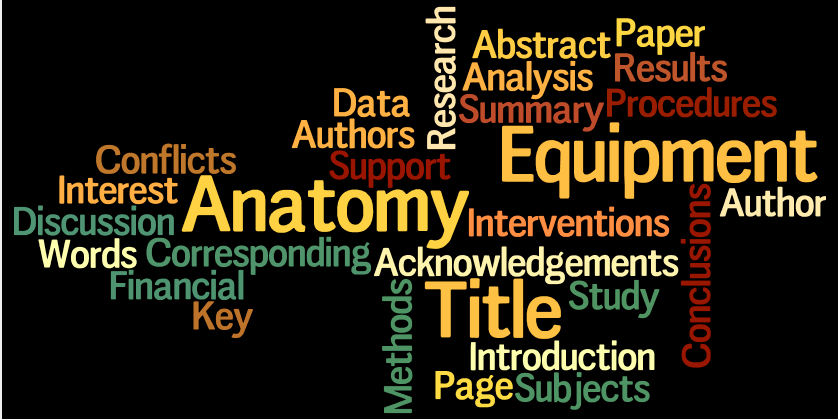The Anatomy of a Research Paper
The Philosophical Transactions of the Royal Society, which was first published in 1665, is considered to be the first scholarly journal. When Henry Oldenburg took the initiative to edit the first issue of the “Philosophical Transactions of the Royal Society”, he introduced some structure in editing and publishing transactions (or papers). Oldenburg even introduced peer review, by corresponding about the submitted papers with his peers to evaluate their quality prior to publication.
By having a ‘defined’ structure, submitted papers were easier to read – by both the reviewers and readers alike. So, scientific writing follows a defined structure which has been developed over hundreds of years. A defined structure allows people to access content at several levels. An Editor of a journal may only read the Title and Abstract before sending the paper out for peer review, while a reader familiar with the topic of the paper may “jump” straight to the Results and Discussion sections.
Nowadays, a research paper contains the following general structure [or gross anatomy]:
- The Head. This consists of the Title, Authors, Abstract, Key Words and information for Correspondence with the Author(s).
- The Body. This represents the “core” of the paper and consists of the Introduction, Method, Results, Discussion and Conclusion [although sometimes the Conclusion is integrated into the Discussion].
- The Tail. This section publishes all ancillary material relevant to the research paper, such as Acknowledgements, References or Bibliography, Disclosures, Funding and any other supplementary material such as Appendices.
This structure is known as IMRaD [Introduction, Methods, Results and Discussion] and is the most commonly used in scientific papers. However, other structures can occur such as IRaDM, where the Methods appear at the end of the research paper. Or, IMRDRDaC, which has two or more discussions followed by an overall Conclusion. Other permutations occur and that is one of the reasons why authors are asked to read the Guidelines carefully before embarking on writing the paper.
The reality is, of course, not this simple. An author cannot just follow this basic structure assuming the content of each section is acceptable. Apart from the “gross anatomy”, a clear, well-written scientific paper should also have some “finer anatomical features”. Let’s take a look at these by asking yourself the following 10 questions:
- Do you use correct Tenses and Grammar?
- Is the Title clear, concise and accurately reflects the contents of the research paper?
- Are all the Authors, who have made a significant contribution to the study, included?
- Does the Abstract provide an accurate summary of the research in a structured way?
- Are the Key Words appropriate, relevant and identifiable by abstracting and indexing services?
- Is the Introduction effective, well-structured and clearly addresses what the problem is and what you did concisely?
- Does the Methods section describe what you did in a detailed and logical sequence, including Statistics, so that another researcher can reproduce your experiment(s) if required?
- Do you present essential Results, which are key to your hypothesis and Discussion, in a logical and clear order?
- Does the Discussion link back to the questions or hypothesis posed in the Introduction?
- Do you mention the strengths and limitations of your study clearly and concisely in the Conclusion?
At Melita Publishing Consultants, we have developed tools that aid you in structuring the individual sections of a scientific paper clearly. This will make your scientific paper clear and concise, as well as having a logical flow of the information you present.
We can provide bespoke Workshops on scientific writing for the beginner, advanced or experienced researcher, generally using the researcher’s own material, or content that is familiar to them. If you are interested in learning more about our Workshops, click here.
Want more Information? Where would you like to receive details about the Science Writing Workshops:

